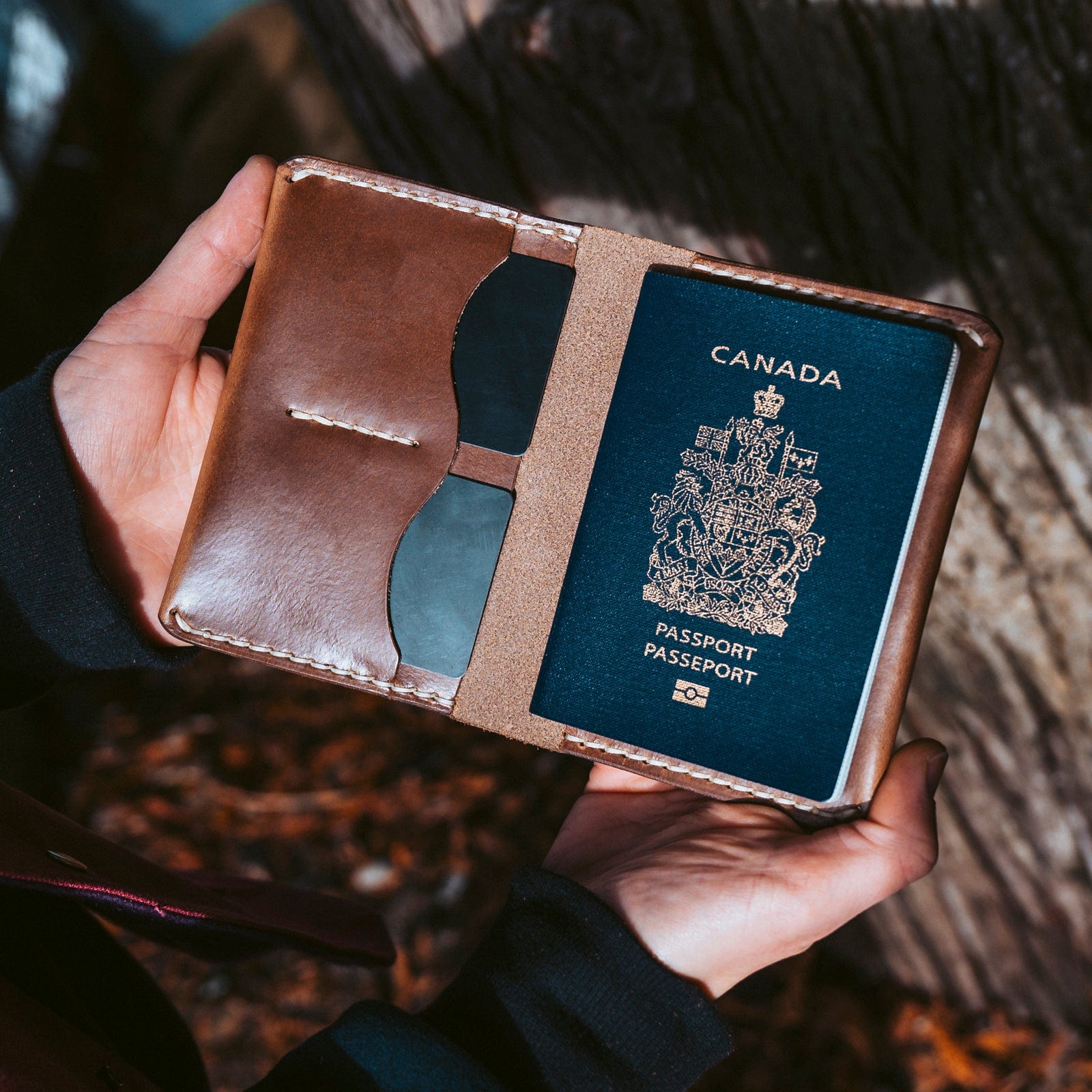It’s easy to assume that a belt is just a functional piece that holds up your pants.
But just as a perfect outfit comes together when different parts fit, perfect leather belts come together when their many pieces fit seamlessly.
Therefore, it’s in your best interest to look beyond just the strap when buying a belt, and consider other belt components including:
- Buckle types
- Belt tongue shapes
- Belt keeper variations
- Belt loop designs
You want the pieces of your belt to work well together for a comfortable fit.
To that end, I'll show you how to choose the right belt by exploring the elements of belt anatomy that contribute to the perfect, best leather belt fit.
table of contents
1 - The Strap
The largest part of your belt is the strap, which is the part that wraps around your waist and holds the buckle in place.
Belt straps vary from one belt to the next, with major differences in:
-
Length: Belts come in different lengths to accommodate different waist sizes. A well-fitting leather belt will hold your pants up without being too tight or too loose.
You measure the length of a belt from the buckle to the most regularly used hole. A good rule of thumb is to choose a belt that’s 2–3 inches longer than your waist size.
-
Width: A belt strap’s width affects the overall look and function of the belt. Belts can range from narrow (around 1 inch) to wide (up to 4 inches).
Narrow belts are preferred for more formal or dressy occasions, while wider belts provide more support and are better suited for casual or workwear. Meanwhile, both a formal and a casual look can be achieved with a strap that’s 1.5 inches wide.

-
Color: Belt straps come in many colors. Leather belts will normally be found in black, a favorite for formal occasions, and brown, which is ideal for more casual occasions.
Over time, belt makers have become more creative, what with other color options such as my olive leather belt.
Material: Belts can be made from a variety of materials to suit different preferences and needs. Some common materials for belt straps include leather, canvas, and suede, as well as synthetic materials such as nylon or polyester.
The table below compares the features of leather, canvas, and nylon.
| Feature | Leather | Canvas | Nylon |
| Origin | Obtained from animal skin (the best leather grade is full grain leather) |
Made from a blend of cotton and synthetic fibers |
Made from synthetic fibers |
| Durability | Ages well in time with proper care, acquiring a leather patina that enhances beauty |
Ages well with proper care, yielding to gradual wear and tear with time |
Commonly affected by pilling, resulting in rapid deterioration |
| Functions | Versatile to fit in both formal and casual settings, but its firmness may not make it great for strenuous activities |
Light, casual, and laid-back, and suitable for rigorous work such as military training |
Light and flexible, and suitable for physical activity |
Expert Tip: There are many counterfeit products being passed off as real leather. Do the proper research to learn how to spot a real leather belt before making a purchase.
2 - The Buckle
Buckles provide the means to fasten and secure the belt around the waist while also adding an extra element of style to your outfit.
When people notice your belt, it’s most likely the buckle that grabbed their attention.
The buckle is typically composed of three parts: the frame, the bar, and the prong.
- The frame: The outer part that goes around the belt and holds the bar and prong in place. It’s usually rectangular or oval in shape and is the most visible part of the buckle.
- The bar: Usually a straight, rigid piece perpendicular to the buckle’s frame. It’s the upper part of the belt buckle that secures the belt strap in place when the prong is poked into the buckle.
- The prong: The horizontal metal rod that fits into a notch on the bar to keep the belt from slipping out of place. It goes through the holes in the strap and into the buckle frame, securing the belt in place.

While the strap and buckle are permanently joined together in some belts, they can be taken apart to allow you to switch out buckles between different belts. The part of the buckle that joins it to the strap is known as the chape (or cap).
A large, flashy buckle can add a bold and eye-catching element to a simple outfit. On the other hand, a small and understated buckle can usher a more classic and refined look.
Because buckles come in various shapes, the design plays a significant role in an outfit’s overall look.
A rectangular or square-shaped buckle, for instance, can provide a more traditional and conservative look. As for a round or oval-shaped buckle, it can add a more modern and fashionable element to the outfit.
Buckles also come in various sizes and materials, each bringing their own unique look and feel. Some common buckle materials include:
- Wood
- Plastic
- Metal (silver, gold, brass, and more)
Consider the overall style and purpose of your outfit when choosing a buckle for a leather belt.
A sleek and minimalist buckle may be appropriate for a formal occasion while a more decorative and unique buckle may add personality and flair to a casual outfit. Picking the best leather belt for every occasion will allow you to blend in with minimal effort.
The table below compares different types of buckles based on their material, shape, size, color, and the outfit style they would best complement:
| Buckle Type | Buckle Shape | Buckle Color | Outfit Style |
| Wood |
Rectangular |
Brown |
Casual |
| Wood |
Oval |
Black |
Formal |
| Plastic |
Square |
Pink |
Playful |
| Plastic |
Circle |
Blue |
Sporty |
|
Metal |
Hexagon |
Silver |
Edgy |
|
Metal |
Octagon |
Gold |
Chic |
The buckle is what holds the belt together. Pay great attention to its manufacturing quality to ensure the durability of your leather belt.
3 - The Tongue
Another name for the prong, the tongue’s length and width can affect how the belt looks when worn, so it’s normally designed proportionally to the buckle. Ultimately, however, the tongue’s shape and length is determined by the shape and size of the buckle.
A longer tongue works well with a small buckle and exudes a feminine feel while a wider and shorter tongue adds a more substantial and masculine look to the belt.
Bonus Tip: The tongue can be also understood to be the free, tapered end of the strap that goes through the loop when the belt is inserted into the buckle. Usually, the shorter it is, the smaller the belt.
Understood in this sense, tongue styles can vary depending on the type of belt and the desired look or function.
For instance, a formal dress belt may have a simple, smooth tongue with no embellishments. Alternatively, a Western-style belt can have a decorated tongue with a concho or other metalwork.
4 - The Loop or the Keeper
The keeper, also known as the belt loop or the loop keeper, is a small but important component of the belt.
It’s the small loop of material, usually the same material as the belt, that sits on the belt and holds the free end of the belt in place after it has been passed through the buckle.
The loop keeper is especially handy for those who are active or move around a lot.
A loose belt can be both uncomfortable and distracting while a secure and well-placed belt loop ensures the belt stays in place, providing a vastly more comfortable wearing experience.
Different loop keeper considerations can contribute to your choice of leather belt.
For instance, you might want a belt loop whose color and material matches the belt’s to create a cohesive and polished look. But a bold or contrasting loop keeper will add a unique and eye-catching element. An ornate keeper can even be your belt’s focal point.
Additionally, if you’re going for a casual, laid-back look, a larger keeper will serve your needs more effectively than a simple, discreet one suited for a formal look.

A Belt Is More Than Just the Strap
All belt components play a crucial role in creating a functional and stylish accessory.
From buckle types to belt tongue shapes and even belt loop designs, I guarantee that a lot of thought goes into each piece to make for the perfect fit.
Here’s a video breaking down the leather belt manufacturing process:
I offer an unlimited lifetime warranty and my company is backed with over seven years experience as a leather manufacturer. That’s why thousands trust Popov leather belts as the perfect gift for him.
The satisfactory reviews I receive are what keep Popov Leather going. But don’t just take my word for it. As Anthony says:
“This is definitely a lifetime belt. You could pass this down to grandkids!”
Or David, who holds my products in high regard:
“You cannot beat their quality, craftsmanship, and attention to detail.”
Written by Ryan Popoff
Ryan Popoff is the creative mind behind Popov Leather wallets, iPhone cases, belts, watch bands and journals since 2013. With a Bachelor Degree in Fine Arts, my leatherworking journey began at home. I wanted to create a simple leather wallet that could fit into my front pocket and — to my delight — it was a hit with family and friends. Hopefully you love our honest, quality leather goods too! Reach out with questions.













